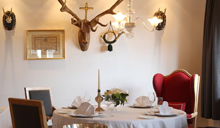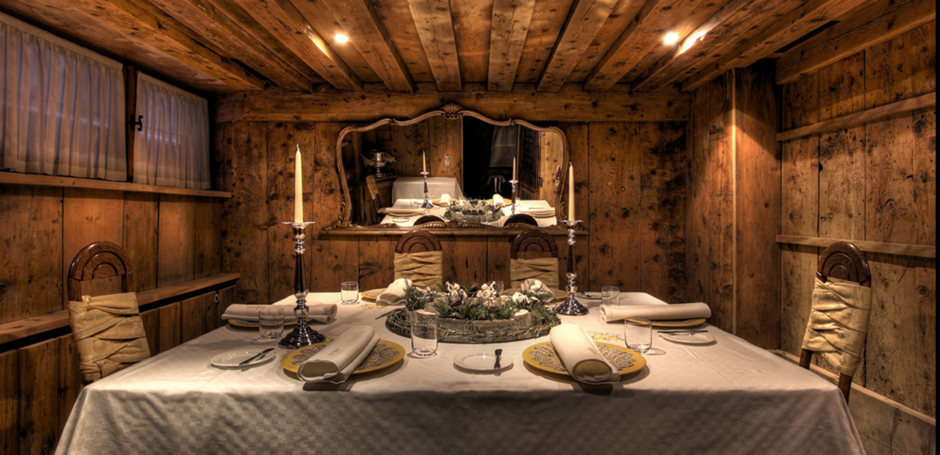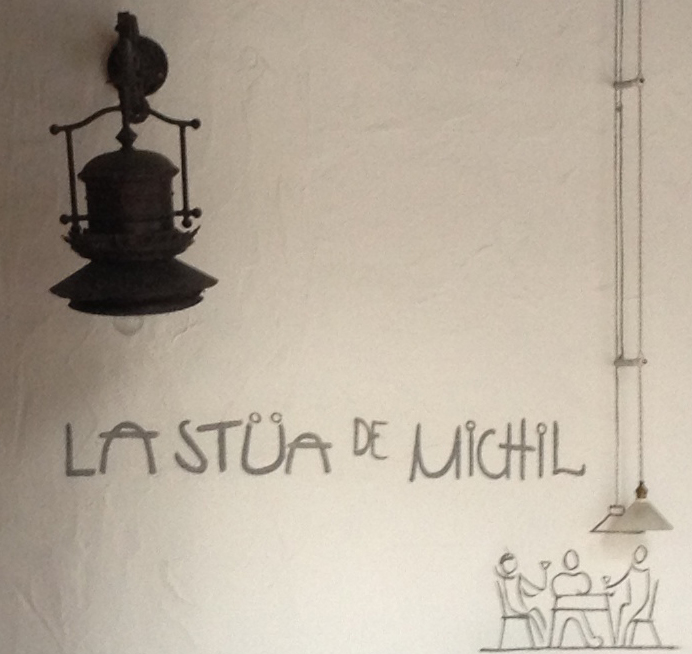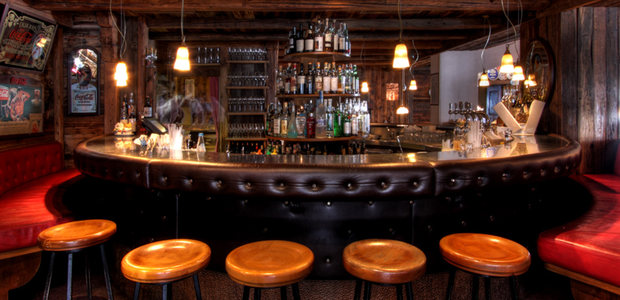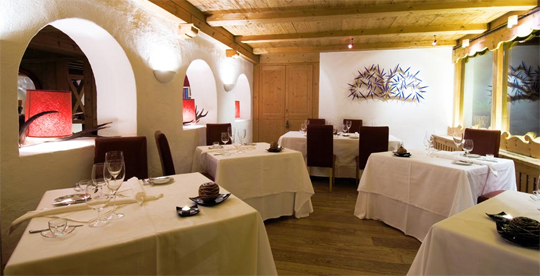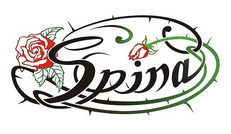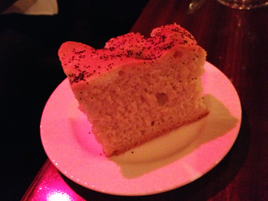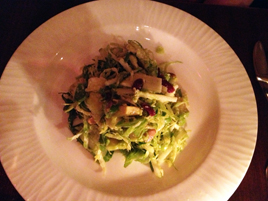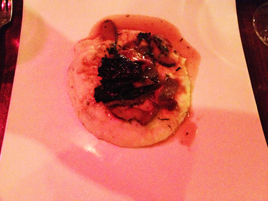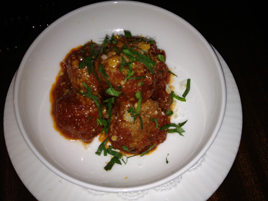
Periodically, the New York food media anoints a new chef-god — a creature (usually young and previously unheralded) who is, for a while, infallible. The blogs and critics drool and pant at every move he makes. What it is, doesn’t matter. Broccoli? Brilliant!!
Right now, the god du jour is two-headed: Rich Torrisi and Mario Carbone, the chef-savants behind Torrisi Italian Specialties and Parm. Up to this point, the exact reason for their deity status was beyond me. At the first restaurant, I found a $50 prix fixe menu (since hiked to $75) severely overrated. At Parm, Pete Wells awarded two stars for a meatball hero, and not much else.
 If you haven’t guessed, when the boys opened their latest spot, an old-school Italian–American joint called Carbone, I didn’t join the heavy breathing, although Eater.com and the notorious Torrisi shill, Kate Krader, did enough for all of us combined.
If you haven’t guessed, when the boys opened their latest spot, an old-school Italian–American joint called Carbone, I didn’t join the heavy breathing, although Eater.com and the notorious Torrisi shill, Kate Krader, did enough for all of us combined.
Having invested several years of deep skepticism in the Torrisi phenomenon, I was prepared to hate Carbone. To my surprise, I loved it. Will you? It depends.
Carbone is very expensive. Antipasti are $15–34, soups and salads $15–21, pastas $19–32, mains $29–53, side dishes $10. My bill for one came to $145 before tip. I drank modestly and by no means over-ate. Tabs over $200 per head won’t be uncommon here.
 Much of the menu is straight out of the classic Italian–American playbook: Shrimp Scampi, Linguine with Clam Sauce, Veal Parmesan. There’s an insulting term for that style of cooking, which I refuse to use. It conjures images of machine-made pasta out of a box and tomato sauce out of industrial-size cans.
Much of the menu is straight out of the classic Italian–American playbook: Shrimp Scampi, Linguine with Clam Sauce, Veal Parmesan. There’s an insulting term for that style of cooking, which I refuse to use. It conjures images of machine-made pasta out of a box and tomato sauce out of industrial-size cans.
This has led to the perception that the genre is inherently simple and seldom worthwhile. But does Italian–American cuisine have to be that bad? Or is that merely a consequence of it being so popular? Have Olive Garden and streetside hucksters in Little Italy warped our perceptions of what the cuisine could be, when done well?
There’s also a perception that the genre is a mongrel interpretation of the cuisine that unsophisticated immigrants brought with them from Italy and then modified, so it’s not really Italian, and therefore is illegitimate.
So that’s the dilemma. If you think Italian–American cuisine is a bastard genre that requires no skill, Carbone’s $50 Veal Parmesan will seem to you an exercise in craven cynicism—a $25 dish that costs double due to the chefs’ outsized reputations. You’d be wrong, but I’m not going to talk you out of it. Just don’t go to Carbone. You’ll hate it.
When I look at Carbone, I see a beloved genre impeccably recreated, treated with respect, and then improved. They get almost everything right, but they make you pay. Oh boy, do they make you pay.
The cocktail list (above left) offers straightforward classics at $17 a pop, but like the food, they’re exactly right. A Gibson on the rocks was served with one of those two-inch-square ice cubes that the high-end cocktail bars use, so that it won’t dilute the drink.
Wines by the glass are just as expensive. Most reds are above $20 per glass; three out of seven are from California, a blunder that needs to be corrected. Prices by the bottle are in a wide range, with most over $65.


No one will call Carbone a bargain, but but the pre-meal extras are generous: a slice of parmesan (above left), American smoked ham (above center) and warm “gramma” bread with tomato (above right), served on one of the most vibrant china patterns I’ve seen in a while.


Pickled vegetables in olive oil (above right) didn’t do it for me: they reminded me of a failed dish at Torrisi Italian Specialties. Then came three more kinds of bread (above right): imported breadsticks, garlic bread (needed to be warmer), and sesame.


Asparagus Genovese ($16; above left) in a pool of warm stracciatella wore a cloak of prosciutto: a classic impeccably done.
Although not indicated on the menu, the kitchen will prepare half-orders of pasta. I decided to try the most cliché of them all, Spicy Rigatoni Vodka ($11.50; above right). The preparation was elevated by the crunch of shaved breadcrums (along with pecorino romano). I also liked the heft of a large meatball ($6; below left).


Veal Marsala ($52; above right) was the best damned veal chop you’re going to find, coupled with the best mushroom orgy you’re going to find.
The meat dishes appear to be uniformly good. Lamb chops ($49), which I saw at the next table over, were massive. The server showed me an uncooked 60-day dry-aged t-bone ($53), which looked to be about an inch and a half thick.


The pre-dessert (above left) was a pastry with powdered sugar. The server brings around a dessert cart, just like the old-fashioned places; the choices are obvious classics. A cheesecake with blueberry compote ($12; above right) was superb, with the consistency of soft butter.
The décor and ambiance have received so much fawning coverage that there’s hardly anything to add. You’ve seen it before—except, not quite. What other Italian–American spot has contemporary artwork “curated” by Vito Schnable, and vintage tuxedos “designed” by Zac Posen? The sound track consists of softies and oldies: “Puttin’ on the Ritz,” “That’s amore,” “Mr. Sandman,” “Stand by me.”
Servers reel off daily specials, and they’ve been trained to upsell. But they do keep an eagle eye on the proceedings, and many dishes are portioned or finished tableside. Whoever runs the front of house has trained them well.
Carbone occupies the space that was formerly Rocco’s, an old-school joint, of the sort Carbone is meant to pay homage. The bar is so tiny that they don’t even have room for stools, and it can get crowded. Reservations have been tough to come by; calls to the published telephone number often go unanswered. I walked in at 5:30pm on a Thursday evening and was seated immediately, but an hour later that probably wouldn’t have worked.
Some people, without question, will find the concept offensive: tired old standards at double the price, as one message-board poster put it. If that’s your perspective, Carbone isn’t for you. But if you like the idea of the classic Italian–American restaurant lovingly reacreated and improved, Carbone is brilliant.
Carbone (181 Thompson St. between Houston & Bleecker Streets, Greenwich Village)
Food: Italian–American classics, impeccably done
Service: Classic and correct
Ambiance: Old-school Little Italy, not exactly as you remembered it
Rating: ★★★
 Monday, October 28, 2013 at 08:23PM
Monday, October 28, 2013 at 08:23PM 
 Once burned, twice careful? How else do you explain the very good, and yet timid, restaurant that is Charlie Bird?
Once burned, twice careful? How else do you explain the very good, and yet timid, restaurant that is Charlie Bird? In an era when most restaurants were becoming more casual, Cru actually got fancier in its first four years, 2004–08. By the peak, it had a 150,000-bottle wine cellar, with a list so hefty they presented it in two volumes, each the size of a phone directory.
In an era when most restaurants were becoming more casual, Cru actually got fancier in its first four years, 2004–08. By the peak, it had a 150,000-bottle wine cellar, with a list so hefty they presented it in two volumes, each the size of a phone directory. Bohr moved onto other ventures for a while before opening Charlie Bird in June. The restaurant is, of course, wine-centric: how could it not be? But neither the food nor the wine attempts anything like the ambition of Cru at any point in its six-year run.
Bohr moved onto other ventures for a while before opening Charlie Bird in June. The restaurant is, of course, wine-centric: how could it not be? But neither the food nor the wine attempts anything like the ambition of Cru at any point in its six-year run.

















